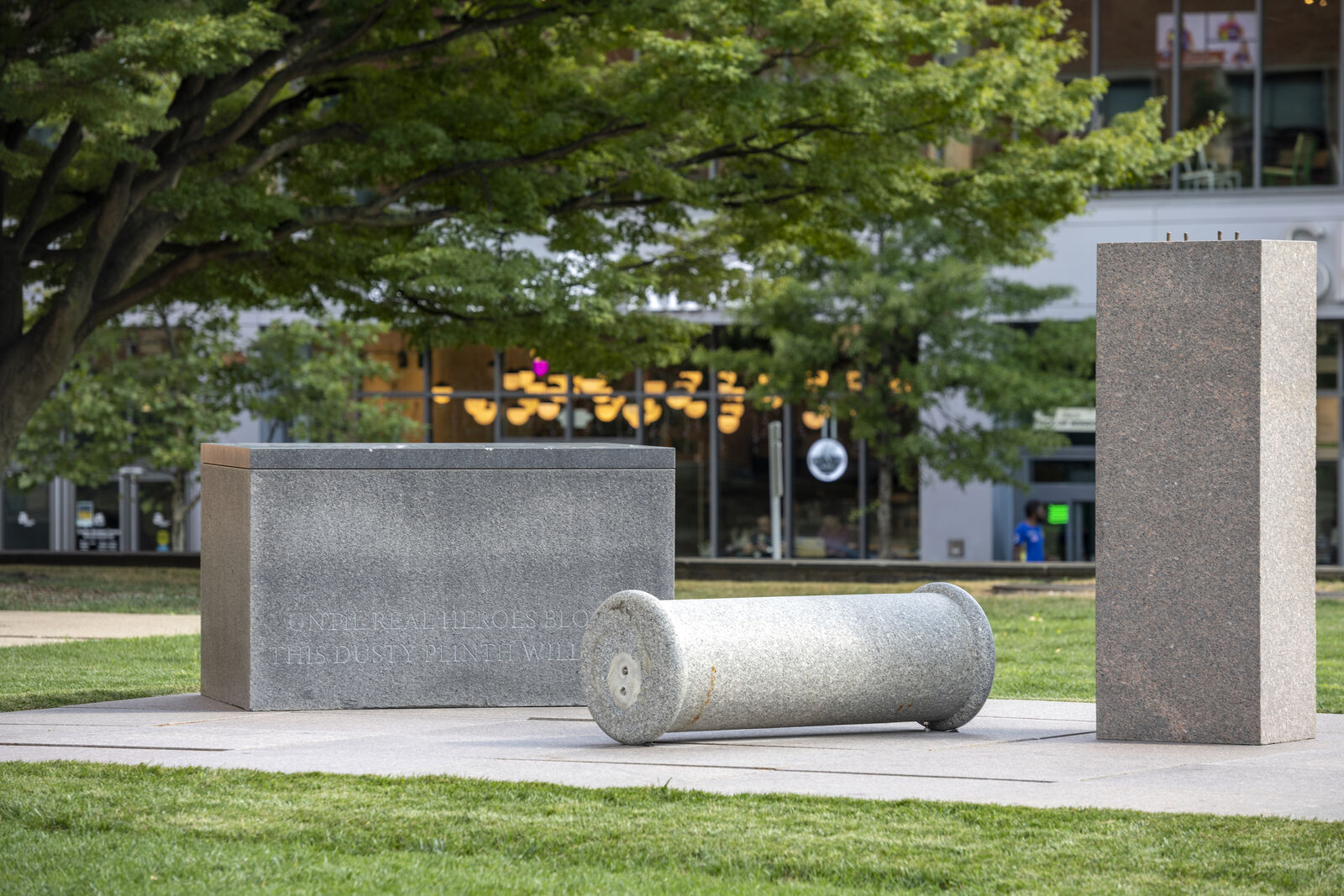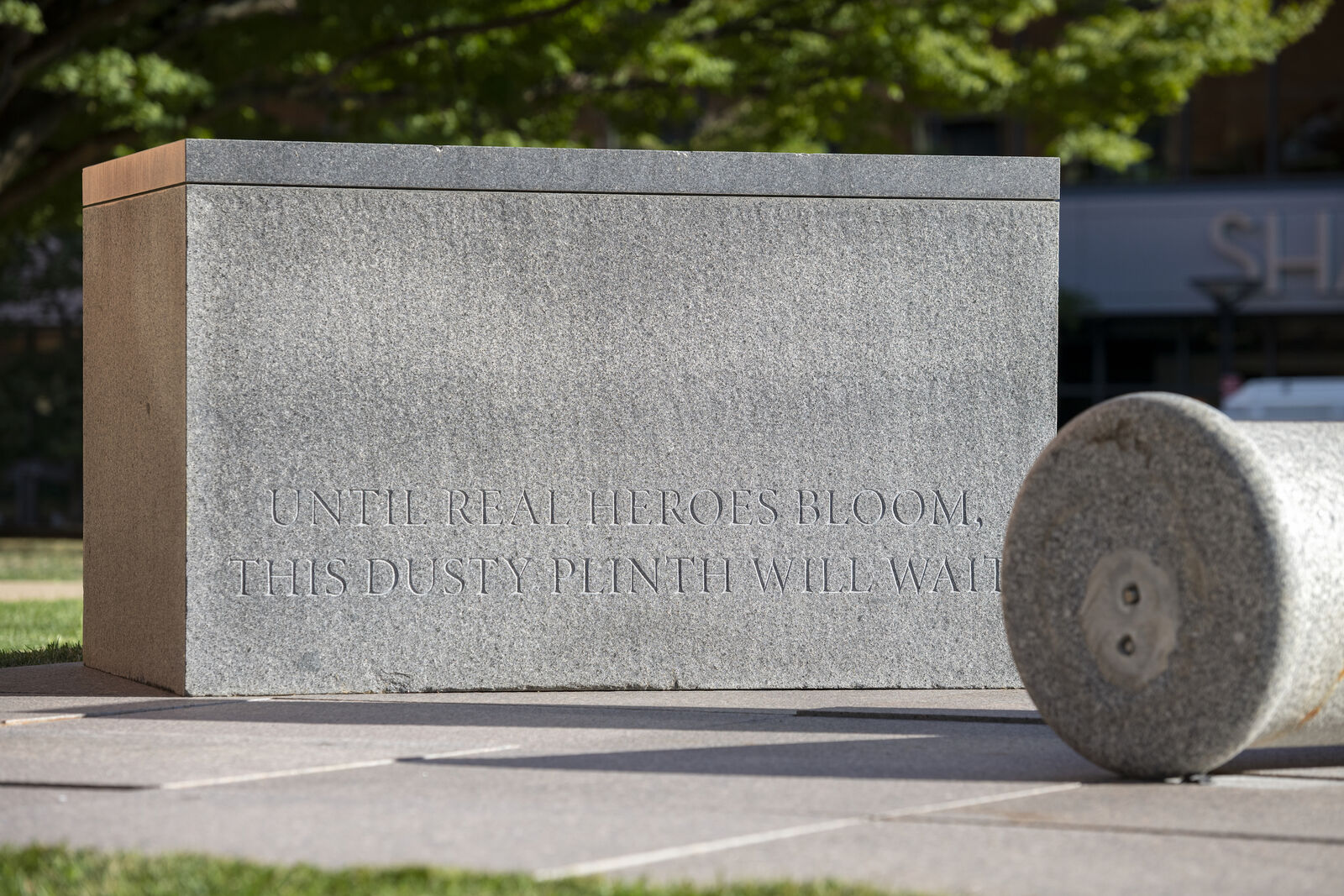Theaster Gates: Monument in Waiting


Created during the turbulent summer of 2020 for the exhibition “Field of Dreams” at the Parrish Art Museum in Water Mill, New York—Theaster Gates’ Monument in Waiting will be on view on Drexel University’s campus for one year, with a series of corresponding programs to be announced in the fall.
Comprised of reclaimed stone plinths and granite tiles devoid of a figure, Monument in Waiting evokes a dismantled public forum. The work responds to ongoing socio-political dialogue about preservation and erasure, collective memory, and public scrutiny of historical figures and monuments, particularly those that reinforce systems of oppression. This tribute, like much of Gates’ work, asks viewers to reconsider the ways in which monuments are destroyed, preserved, or adapted to enshrine moments and figures in our history
With Monument in Waiting, Gates responds to the removal of Confederate and colonialist monuments and acknowledges the role of monuments in marking histories of injustice. The artist draws viewers through the installation, into a space for confronting these historical truths, and of aspiring collectively toward a future built upon equal justice. Gates interrogates long-held notions of heroism, fashioning pedestals that allow us to reconsider and expand the possibilities for valiant acts. As an inscription engraved on one of the plinths reads, “Until real heroes bloom, this dusty plinth will wait.”
Monument in Waiting is presented by Philadelphia Contemporary, Forman Arts Initiative, and Drexel University, courtesy of the artist and GRAY, Chicago/New York.
Lead images: Theaster Gates, Monument in Waiting, at Drexel University, 2022. Photo: Timothy Schenck. © Theaster Gates Studio.
Press Release
Press
The Washington Post
In Philadelphia, a monument to end all monuments
Philadelphia Inquirer
How a monument to no one found a home at Drexel University
WHYY
It’s waiting for you: New public sculpture ‘Monument in Waiting’ at Drexel University
About the artist
Theaster Gates (b. 1973) was born and raised in Chicago, where he currently lives and works. Drawing from his earlier vocational pursuits in public service, urban planning, and religious studies, Gates works to redeem spaces that have been left behind, centering his practice on the possibility of the “life within things.” Known for his recirculation of art-world capital, Gates’s recent artworks possess an intersectional relationship between space theory and land development, sculpture and performance, smartly upturning art values, land values, and human values. In all aspects of his work, he contends with the notion of Black space as a formal exercise—one defined by collective desire, artistic agency, and the tactics of a pragmatist.
With a celebrated stronghold in Chicago, Gates’s career has seen international recognition from his participation in the Whitney Biennial (2010), documenta 13 (2012), and the Venice Biennale (2015), to major museum exhibitions all over the world.
Gates has received numerous awards and distinctions, including the Nasher Prize (2018), the Kurt Schwitters Prize (2017), the American Academy of Arts & Sciences Award (2016), the Smithsonian American Ingenuity Award for Social Progress (2015), and the Hirshhorn Museum and Sculpture Garden trusteeship (2015). Public collections include Whitney Museum of American Art, New York; The Museum of Modern Art, New York; Tate Modern, London; and the Museum of Contemporary Art, Chicago, among many others.
